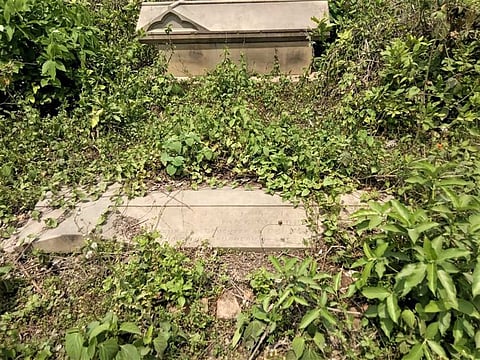Bihar villagers desecrate graves of British officials in search of valuables
Villagers unable to lay hands on jewellery despite digging up 200 graves

Patna: Villagers in Bihar are digging century-old graves of British officials and their family members hoping to find valuables inside. There is, however, no report of the villagers laying their hands on any valuables, but their acts have destroyed most of the graves located in front of a camp of security forces.
People in charge of the cemetery said the villagers began digging out the graves of the British officials and their kin in the belief that they might contain jewellery made of gold, diamonds and other precious stones. The general belief among the villagers is that during old times, precious materials and other items of luxury used to be buried along with the dead.
The unusual incident of grave digging has been reported from a cemetery located in Purnia district, some 350 km east of Patna. As per reports, of the 300 graves of British people, around 200 have been completely vandalised by local villagers. Those laid to rest in the graves include people between the ages of 10 and 88 from the years 1880 to 1942, according to the epitaphs.
“Majority of the graves have been vandalised since there is no security for this cemetery. We reported the matter to the local administration but nothing has been done,” Father Jacob of Emmanuel Church, Purnia told the local media. The cemetery is spread over some 6.50 acres of land.
Historian Naresh Srivastava said the bodies of British officials and their family members were buried in this cemetery. Their postings were made during the colonial era while India was under British rule. “It is believed when the British people died, their family buried all their ornaments with them along with other items of luxury. So, the local people have been digging out these graves in a bid to lay their hands on these jewels,” Srivastava told the local media on Monday.
Purnia district came into existence in February 1770 and it was only after then that the posting of the British officials were made in this border district. The first British collector for Purnia was Gerard Gustavus Ducarel who served from 1770 to 1774.
According to researchers and historical records, at the beginning of British rule, many people from Europe came to Purnia and settled primarily around the Saurya river in the middle of the city. Later, they started shifting to the west of this river and constructed their own palatial bungalows.
Among the most active European zamindars (landlords) in Purnia were Alexander John Forbes and Palmer. Forbesganj in neighbouring Araria district has been named after Forbes who loved building the race course and other kinds of clubs. Alexander Forbes and his wife Diana died of malaria in 1890.
Like Forbes, another Englishman named Palmer lived in Purnia for a long time. He bought the zamindari of a king and settled here. Palmer’s only daughter, Downing, was his heir. It is also said that Indigo cultivation was first started in Purnia by an Englishman named John Kelly.
Sign up for the Daily Briefing
Get the latest news and updates straight to your inbox


